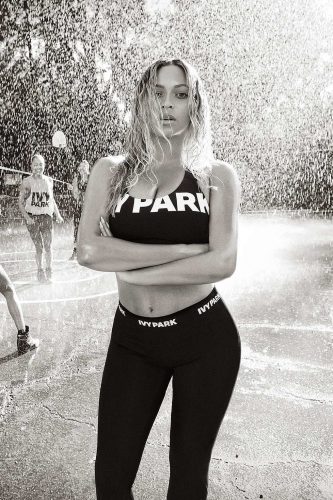
In years to come, when Hollywood makes its first period pieces about the mid 2010s, or HBO films a miniseries about American life at the end of the Obama presidency, they’ll have a wide range of fashion trends to choose from when dressing the cast. But they won’t be able to pull off a credible depiction of today’s professional class without putting at least some of the females in “athleisure”, e.g. yoga pants and the like.
Jokes about ladies adopting high-end athletic gear as their go-to daily uniform (for all manner of non-athletic activity) have cropped up in enough movies and TV shows at this point as to become cliched. For whatever reason–probably having to do with the increasing anxiety around anything related to gender–Lululemon products are a safe target for wisecracks. The men in my orbit, to the extent that they notice, find the force and passion behind the trend amusing, while all the women I know seem to be in on the joke, not averse to poking fun at the pretense of exertion the clothes imply, just happy to be comfortable and, er, streamlined.
So, among those who spend time thinking about such things, today’s layered spandex tends be seen as the slightly sexier modern equivalent of pajamas or sweats, at best an (expensive) emblem of liberation, at worst the latest in a long and relatively innocuous line of popular clothing items with status associations.
 According to Moira Wiegel, who penned an impressive treatise on the subject for Real Life entitled “Pajama Rich”, that assessment may be incomplete. In her view, there could even be something nefarious going on here, an objectification that is not so much sexual as existential or economic (or all of the above), the sartorial version of the deceptively counterproductive self-optimization tools delivered via smart technology. Under the rubric of freedom, in other words, another vanguard of the all-demanding cult of productivity (a secular euphemism for “justification by works of the law”) may be flourishing.
According to Moira Wiegel, who penned an impressive treatise on the subject for Real Life entitled “Pajama Rich”, that assessment may be incomplete. In her view, there could even be something nefarious going on here, an objectification that is not so much sexual as existential or economic (or all of the above), the sartorial version of the deceptively counterproductive self-optimization tools delivered via smart technology. Under the rubric of freedom, in other words, another vanguard of the all-demanding cult of productivity (a secular euphemism for “justification by works of the law”) may be flourishing.
Or maybe these are just comfortable yet flattering pants. Lacking much/any personal experience with athleisure, I have no idea whether Wiegel is overstating things. Perhaps those who own a pair or five might want to weigh in, pun intended:
The size of the market for athleisure — a coinage officially adopted into Merriam-Webster’s lexicon this April — grew five percent each year between 2009 and 2014, from $54 billion to $68 billion. The trend accounted for nearly all growth in the apparel, footwear, and accessories sector during this period. People in American cities were wearing Lululemon, Lucy, and Lorna Jane; Gap Body, Athleta, and Nike everywhere, including to the office. According to a February article in the New York Times, the market may hit $100 billion by the end of 2016. Meanwhile, sales of jeans fell six percent in 2014 alone — the most precipitous drop in more than 30 years…
For many wearers, the athletic part of athleisure remains aspirational: Sales of yoga clothes increased 10 times as much as participation in yoga classes over the 2009 to 2014 span, according to the Wall Street Journal…
It is not simply ease or convenience that puts women in athleisure. The look physically connects us to an ideal… Athleisure is trending because it offers a distinctive physical feeling that corresponds to how we are expected to feel about work in an era when “do what you love” is the conventional wisdom about careers. Lululemons announce that for their wearer, life has become frictionless. It clothes us in an ideal that merges work and play to the point where they become indistinguishable, and effort feels like pleasure.
While Spanx are a secret weapon for managing intractable body parts, Lulus put that effort on proud display, announcing that their wearer is eager to be seen as engaging in constant self-management — toning her ass and thighs and balancing work with “life.” As the “embodied cognition” people might put it, yoga pants let the entire body think that aspiration.
Lululemons suggest an unfussy attitude (“Oh these? These are just gym clothes!”). At the same time, they telegraph that their wearer is driven. “I am dedicated to fitness,” they say, “and I have no time to change.” Yet, wearing these pants at midday hints that you have a flexible schedule. You do not have to go into a traditional office. Or, if you do, you do not feel any pressure to impress. You just might step out for a spinning class or a green juice. In other words, Lululemons convey status….
Even as athleisure liberates us from earlier, gender-bound modes of dress they enforce a new code of the body as a constant work in progress. The ideal contemporary subject is a person who is willing to spend all her time being productive. You have to work hard to afford Barre or spin or yoga; at the same time, these efforts energize you to return to work…
When the workday starts or ends, and where work happens, have become less clear. At the same time, selfhood has become an entrepreneurial project, a question of optimizing different activities.

COMMENTS
3 responses to “The Complicated Righteousness of Yoga Pants”
Leave a Reply













This is very thought provoking!